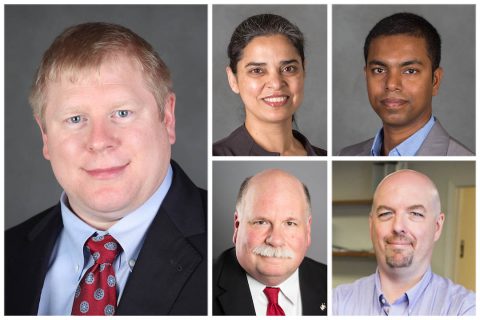 Clarksville, TN – As leaders at Austin Peay State University (APSU) work to define what classes will look like when students return to campus this fall, an APSU medical laboratory science professor and virologist is working with his colleagues to build a statistical model to help guide the way.
Clarksville, TN – As leaders at Austin Peay State University (APSU) work to define what classes will look like when students return to campus this fall, an APSU medical laboratory science professor and virologist is working with his colleagues to build a statistical model to help guide the way.

In mid-March, Dr. Perry Scanlan – a medical laboratory science professor in the APSU Department of Allied Health Sciences – frequently referenced coronavirus data from local, state and national sources in his role on the University’s Coronavirus Task Force.
“But I realized that this doesn’t help if we don’t come up with ways to predict how to determine what might happen at Austin Peay State University,” Scanlan said. “It was hard to find solid, concrete data to make decisions.”
Scanlan sought help from Drs. Vajira Manathunga and Ramanjit Sahi from the APSU Department of Mathematics and Statistics, Dr. Andrew Luna from APSU’s Decision Support and Institutional Research and Mike Wilson from APSU’s GIS Center to help build a more specific predictive model.
The group has been meeting since late March to build the model to answer one big question.
“How can we predict what might happen on campus or what is happening in the community so that we can help protect our students, faculty and staff on campus and even extend that help to our community partners?” Scanlan said.
The goal: Prevent COVID-19 Coronavirus’s spread
The goal of the model is to determine how COVID-19 Coronavirus might affect people on campus during a 15-week semester this fall, Scanlan said. The data will help drive the university’s administrative decision-making.
“The real thought is, ‘How can we really get a model that tells us who’s at risk, who is more likely to become ill, what will happen over the course of a semester or a summer or longer, and then how can we use that model to intervene and make a difference for our students, our faculty and our staff?’” Scanlan said.
“As we change the variables in the model, we can predict what will happen if we don’t socially distance or if we have larger class sizes,” he added. “It will be able to predict what might happen and/or guide us in how we can intervene to prevent the spread of COVID-19 Coronavirus.”
The model is meant to help guide campus decision-making, but Scanlan hopes that as the model advances, the university can use it to help city, county and state partners.



